The Spokesman-Review Bronzes
“Builders and Leaders” (sometimes referred to as The Spokesman-Review Bronzes) is an installation of 12 bronze busts honoring early business and community leaders who influenced the development of Spokane. The busts are installed on the east wall of the newspaper’s production facility at 1 North Monroe Street in Spokane, Washington. (See below for images and descriptions of each civic leader.)
The bronzes, by Walla Walla-based sculptor Wayne Chabre, were commissioned by The Spokesman-Review in mid-2002, and installation was completed on October 8, 2003. Chabre’s concept for the exterior art project was selected from 16 designs submitted in response to requests for proposals the newspapers sent out in mid-2002. Applications came from both local and non-local artists. Chabre’s works are mounted on the capitals of the building’s east-facing exterior wall and provide counterpoint to the gargoyles atop the historic Chronicle building on the east side of Monroe Street.
Casting for the bronzes was done by Trevor Hunter of T. Hunter Bronze Foundry in Walla Walla. Plaques identifying the sculptures were designed by Jeanne McMenemy, also of Walla Walla, and cast at Metallic Arts in Spokane.
The subjects of the bronzes were chosen by the newspaper. The choice of subjects was designed to provide viewers with launch points for discussion of long-standing local issues relating to economic development, the environment, social justice, ethnic diversity and media. At the time of the installation, a newspaper spokesman noted that, “Ultimately, the final selection of honorees in a display of this type is going to be somewhat arbitrary—but, in the end, we think the people chosen exemplify a wide range of experience, vision, expertise, compassion and hopefulness about the future.” The newspaper conceived the installation as a complement to a display on more recent leaders in the lobby of the Spokane Chamber of Commerce building and to other public sculptures in downtown Spokane, including a bronze of Louis Davenport in the lobby of The Davenport Hotel.
Bronze Photos by: Jeanne McMenemy
Above Text by: Shaun O'L. Higgins
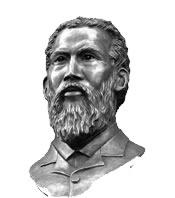
Peter B. Barrow
1840-1906
Pastor, Entrepreneur, Publisher
Peter B. Barrow was a pioneer minister and also edited one of Spokane’s first and more successful newspapers. He was instrumental in founding a commercial farm at Deer Lake for the purpose of providing a livelihood for local African-American workers. Before coming to Spokane, Barrow had served in a southern state’s legislature during the Reconstruction period.
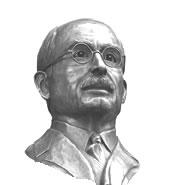
William H. Cowles
1866-1946
Publisher, Business Leader, Philanthropist
William H. Cowles invested in an early Spokane newspaper called The Spokesman, a competitor to the previously established Review. In 1893 he acquired his rival and then merged it to form The Spokesman-Review. A major business leader, he invested in many local concerns, supported many civic and cultural organizations and established two local foundations.

James N. Glover
1837-1921
Developer, Mayor, Father of Spokane
James N. Glover, an early land developer, is envisioned and promoted Spokane’s potential as a regional center. He served as mayor of Spokane from 1883-1885 and is often called “The Father of Spokane.”
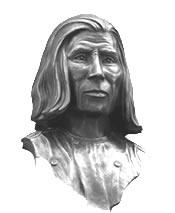
Spokane Garry
1811-1892
Teacher, Chief of the Spokanes, Rights Advocate
As a chief of the Spokanes, Garry was an articulate and effective advocate for Native American rights. As a boy, he was sent by the Hudson Bay Company to receive a western education from Church of England missionaries at Fort George in Canada’s Red River country. After six years there, he returned to the Spokane area and soon established the first school in the Inland Northwest, teaching agriculture, English and religion.
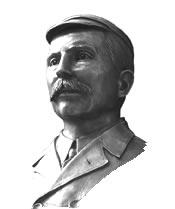
Jay P. Graves
1859-1948
Railroad and Mine Developer, College Benefactor
Jay P. Graves was a mine developer, founder of the Spokane and Inland Empire railroad, and a major early benefactor of Whitworth College. His landmark North Spokane home, Waikiki, designed by architect Kirtland Cutter, now serves as a retreat and meeting site for Gonzaga University.
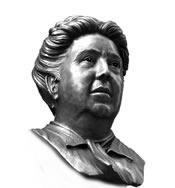
May Arkwright Hutton
1860-1915
Mine Owner, Rights Activist, Philanthropist
May Arkwright Hutton was a convention-flaunting mine owner, women’s rights activist and philanthropist. In 1901, she and her husband Levi “struck it rich” in North Idaho’s Hercules mine. In 1906, they moved to Spokane and established or provided major support to institutions and charities aiding women and children in need.
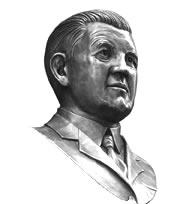
George C. Jewett
1877-1949
Agricultural Leader, Wheat Marketer, Banker
George C. Jewett was an early president of the Spokane Federal Land Bank and formed the first Washington wheat growers’ association to help market the region’s leading agricultural crop. Area farmers once campaigned, albeit unsuccessfully, to get him named U.S. Secretary of Agriculture. Following his years in Spokane, he moved to Chicago and worked to form a “transportation bank” to assure farmers guaranteed access to reasonable freight rates. In later years, he became a major figure in the development of the Farmers’ Insurance Group.
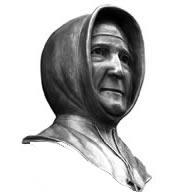
Mother Joseph
1823-1902
Architect, Religious Leader, Hospital Builder
A native of Quebec, Mother Joseph of the Sacred Heart (birth name Esther Pariseau) was the Inland Northwest’s first architect. In 1856, she led a group of four other sisters to Washington Territory from Montreal. The group was charged with educating the young, caring for the ill and indigent, and observing religious duties. Ten years later, she was put in charge of construction of her order’s buildings in the Northwest. In 1886 she designed and supervised construction, in Spokane, of the Inland Northwest’s first hospital, Sacred Heart Hospital (now Sacred Heart Medical Center).
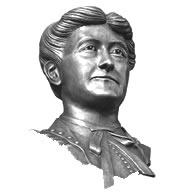
Mary A. Latham
1844-1917
Physician, Essayist, Library Advocate
A native of Ohio and graduate of a Cincinnati medical school, Dr. Mary A. Latham established her practice in Spokane in 1887, becoming the first woman doctor in the city. She specialized in the treatment of women and children. Dr. Latham was a leader in civic and cultural affairs, founding the city’s first library society, leading animal-protection efforts – she helped found the Spokane Humane Society – and regularly contributed essays to popular and professional journals.
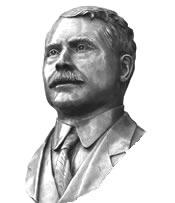
James P. McGoldrick
1859-1939
Lumberman, Industry Leader, Banker
James Patrick McGoldrick moved to Spokane in 1906 after acquiring A. M. Fox lumber mill and relocating Minneapolis-based McGoldrick Lumber Company to Spokane. The mill, then the most modern in the region, was located immediately south of Gonzaga University. Under McGoldrick’s leadership the mill was expanded and its output quadrupled. For years it was Spokane’s largest industrial employer. McGoldrick, a national lumber-industry leader, tirelessly championed the region’s economic potential and established innovative workplace safety programs in his operations.

Robert B. Paterson
1865-1924
Merchant, Civic Leader, Retail Innovator
Robert B. Paterson, merchant, was a principal in the Spokane Dry Goods wholesale business and its retail division, The Crescent department store. Paterson was active in city cultural and economic affairs and known for innovative merchandising techniques.
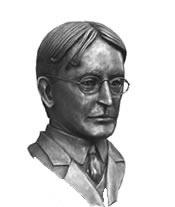
Aubrey L. White
1864-1948
Parks Advocate, River Preservationist, Newspaper Columnist
An associate of Jay P. Graves in the development of mines and railways, Aubrey L. White was the guiding force behind the development of Spokane’s public parks. In addition to championing “green space,” he was was a leading advocate of river preservation. For many years, he was a popular garden columnist for The Spokesman-Review.